Secondary DNS – Deep Dive
How Does Secondary DNS Work?
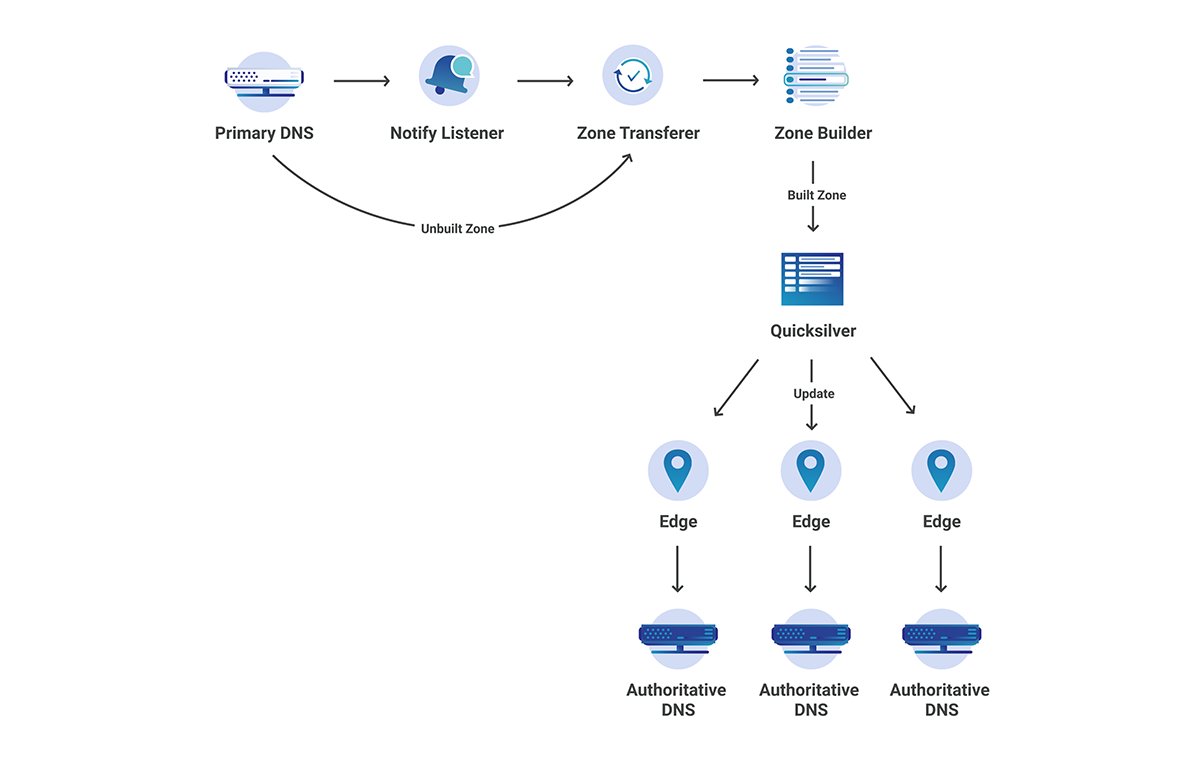
If you already understand how Secondary DNS works, please feel free to skip this section. It does not provide any Cloudflare-specific information.
Secondary DNS has many use cases across the Internet; however, traditionally, it was used as a synchronized backup for when the primary DNS server was unable to respond to queries. A more modern approach involves focusing on redundancy across many different nameservers, which in many cases broadcast the same anycasted IP address.
Secondary DNS involves the unidirectional transfer of DNS zones from the primary to the Secondary DNS server(s). One primary can have any number of Secondary DNS servers that it must communicate with in order to keep track of any zone updates. A zone update is considered a change in the contents of a zone, which ultimately leads to a Start of Authority (SOA) serial number increase. The zone’s SOA serial is one of the key elements of Secondary DNS; it is how primary and secondary servers synchronize zones. Below is an example of what an SOA record might look like during a dig query.
example.com 3600 IN SOA ashley.ns.cloudflare.com. dns.cloudflare.com.
2034097105 // Serial
10000 // Continue readingWhat Happens When The Whole World Goes Remote? Not To Worry, We Were Built For This


In March, governments all over the world issued stay-at-home orders, causing a mass migration to teleworking. Alongside many of our partners, Cloudflare launched free products and services supported by onboarding sessions to help our clients secure and accelerate their remote work environments. Over the past few months, a dedicated team of specialists met with hundreds of organizations - from tiny startups, to massive corporations - to help them extend better security and performance to a suddenly-remote workforce.
Most companies we heard from had a VPN in place, but it wasn’t set up to accommodate a full-on remote work environment. When employees began working from home, they found that the VPN was getting overloaded with requests, causing performance lags.
While many organizations had bought more VPN licenses to allow employees to connect to their tools, they found that just having licenses wasn’t enough: they needed to reduce the amount of traffic flowing through their VPN by taking select applications off of the private network.
We Were Built For This
My name is Dina and I am a Customer Success Manager (CSM) in our San Francisco office. I am responsible for ensuring the success of Cloudflare’s Enterprise customers and managing all of Continue reading
Add Watermarks to your Cloudflare Stream Video Uploads
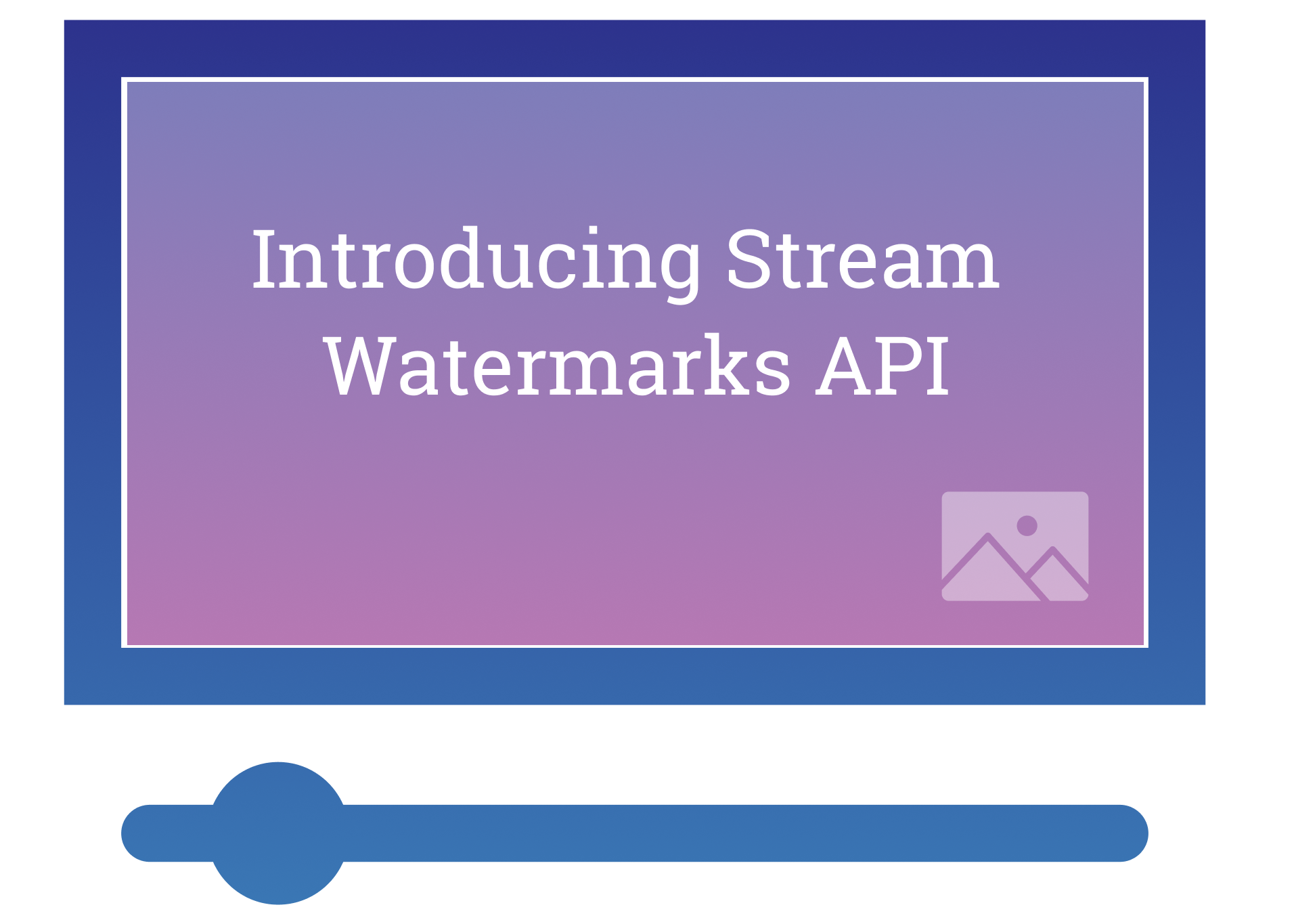
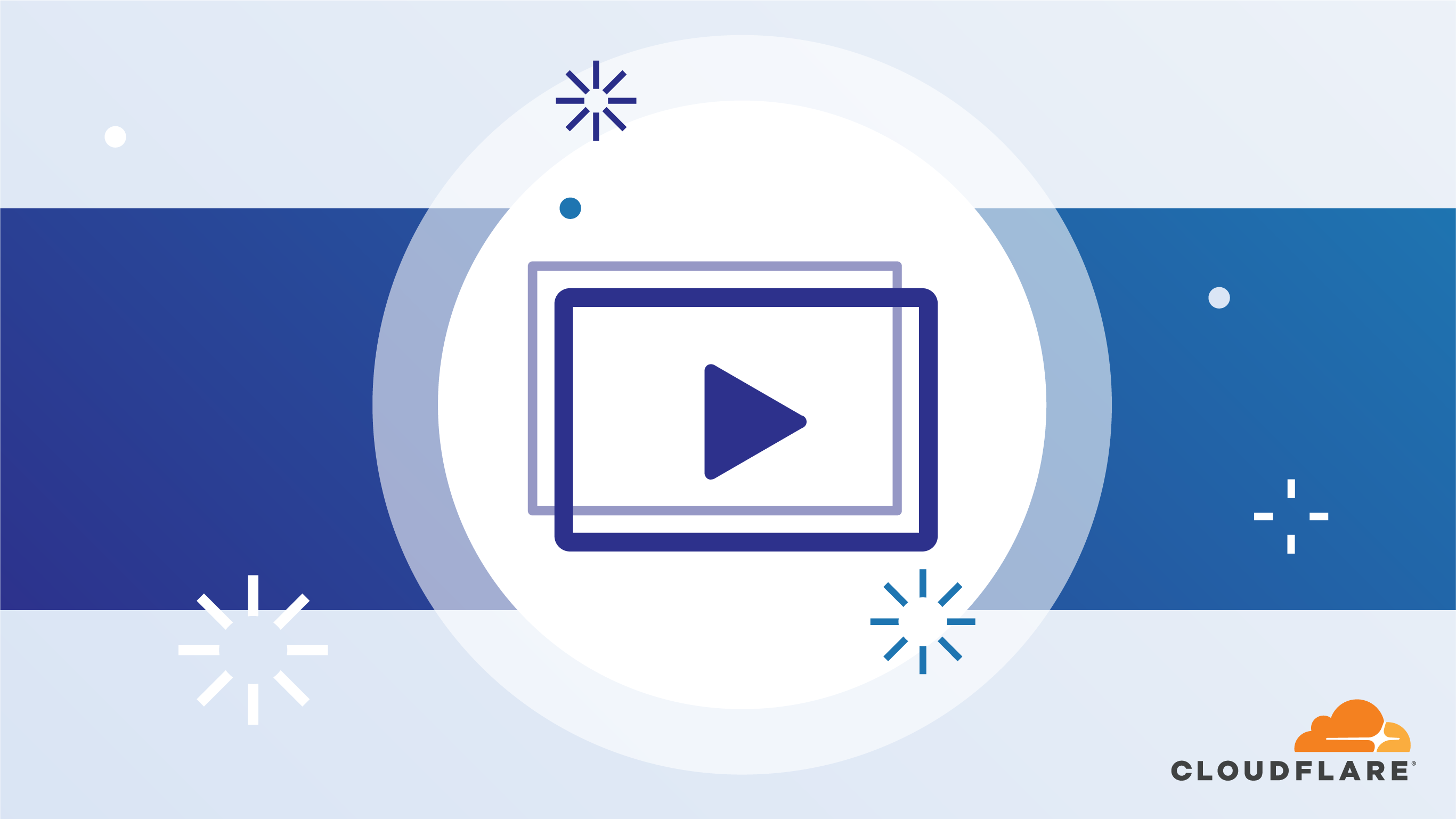
Since the launch of Cloudflare Stream, our customers have been asking for a programmatic way to add watermarks to their videos. We built the Watermarks API to support a wide range of use cases: from customers who simply want to tell Stream “can you put this watermark image to the top right of my video?” to customers with more detailed asks such as “can you put this watermark image in a way it doesn’t take up more than 10% of the original video and with 20% opacity?” All that and more is now available at no additional cost through the Watermarks API.
What is Cloudflare Stream?
Cloudflare Stream provides out-of-the-box video infrastructure so developers can bring their app ideas to market faster. While building a video streaming app, developers must ask themselves questions like
- “Where do we store the videos affordably?”
- “How do we encode the videos to support users with varying Internet speeds?”
- “How do we maintain our video pipeline in the long term?”
Cloudflare Stream is a single product that handles video encoding, storage, delivery and presentation (with the Stream Player.) Stream lets developers launch their ideas Continue reading
Migrating cdnjs to serverless with Workers KV

Cloudflare powers cdnjs, an open-source project that accelerates websites by delivering popular JavaScript libraries and resources via Cloudflare’s network. Since our major update in December, we focused on remodelling cdnjs for scalability and resilience. Today, we are excited to announce how Cloudflare delivers cdnjs—a migration to a serverless infrastructure using Cloudflare Workers and its distributed key-value store Workers KV!
What is cdnjs?

For those unfamiliar, cdnjs is an acronym describing a Content Delivery Network (CDN) for JavaScript (JS). A CDN simply refers to a geographically distributed network of servers that provide Internet content, whether it is memes, cat videos, or HTML pages. In our case, the CDN refers to Cloudflare’s ever expanding network of over 200 globally distributed data centers.
And here’s why this is relevant to you: it makes page load times lightning-fast. Virtually every website you visit needs to fetch JS libraries in order to load, including this one. Let’s say you visit a Sydney-based website that contains a local file from jQuery, a popular library found in 76.2% of websites. If you are located in New York, you may notice a delay, as it can easily exceed 300ms to fetch the file—not to mention Continue reading
Unimog – Cloudflare’s edge load balancer

As the scale of Cloudflare’s edge network has grown, we sometimes reach the limits of parts of our architecture. About two years ago we realized that our existing solution for spreading load within our data centers could no longer meet our needs. We embarked on a project to deploy a Layer 4 Load Balancer, internally called Unimog, to improve the reliability and operational efficiency of our edge network. Unimog has now been deployed in production for over a year.
This post explains the problems Unimog solves and how it works. Unimog builds on techniques used in other Layer 4 Load Balancers, but there are many details of its implementation that are tailored to the needs of our edge network.

The role of Unimog in our edge network
Cloudflare operates an anycast network, meaning that our data centers in 200+ cities around the world serve the same IP addresses. For example, our own cloudflare.com website uses Cloudflare services, and one of its IP addresses is 104.17.175.85. All of our data centers will accept connections to that address and respond to HTTP requests. By the magic of Internet routing, when you visit cloudflare.com and your Continue reading
Rendering React on the Edge with Flareact and Cloudflare Workers
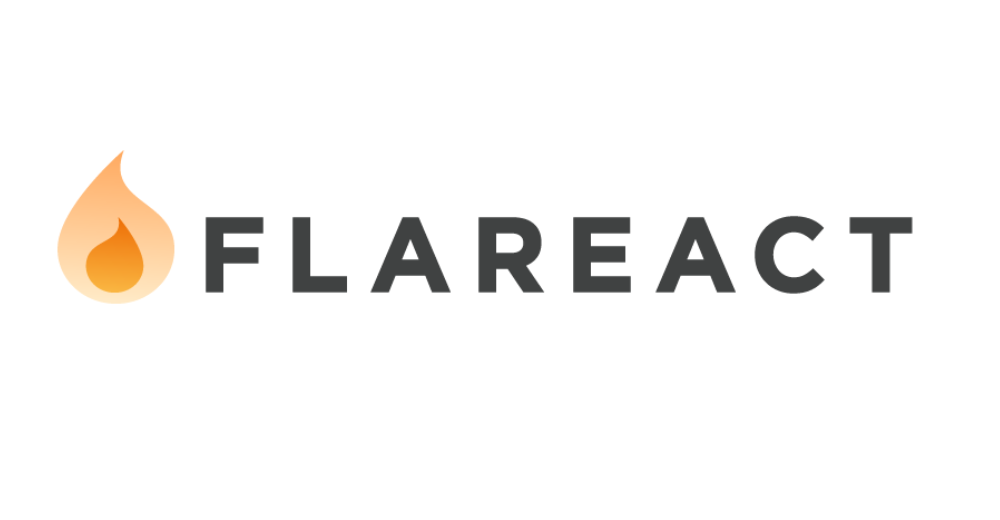
The following is a guest post from Josh Larson, Engineer at Vox Media.
Imagine you’re the maintainer of a high-traffic media website, and your DNS is already hosted on Cloudflare.
Page speed is critical. You need to get content to your audience as quickly as possible on every device. You also need to render ads in a speedy way to maintain a good user experience and make money to support your journalism.
One solution would be to render your site statically and cache it at the edge. This would help ensure you have top-notch delivery speed because you don’t need a server to return a response. However, your site has decades worth of content. If you wanted to make even a small change to the site design, you would need to regenerate every single page during your next deploy. This would take ages.
Another issue is that your site would be static — and future updates to content or new articles would not be available until you deploy again.
That’s not going to work.
Another solution would be to render each page dynamically on your server. This ensures you can return a dynamic response for new or updated articles.
Two clicks to add region-based Zero Trust compliance
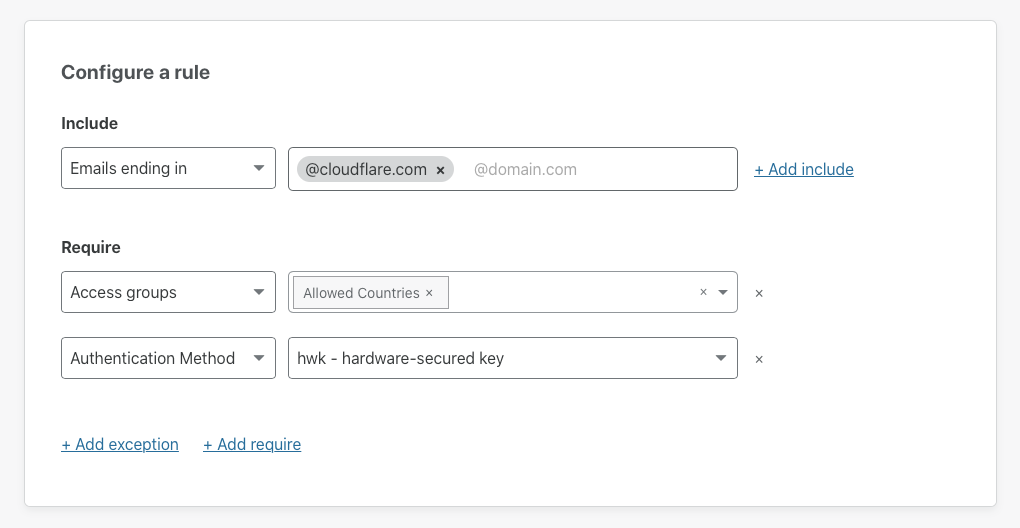
Your team members are probably not just working from home - they may be working from different regions or countries. The flexibility of remote work gives employees a chance to work from the towns where they grew up or countries they always wanted to visit. However, that distribution also presents compliance challenges.
Depending on your industry, keeping data inside of certain regions can be a compliance or regulatory requirement. You might require employees to connect from certain countries or exclude entire countries altogether from your corporate systems.
When we worked in physical offices, keeping data inside of a country was easy. All of your users connecting to an application from that office were, of course, in that country. Remote work changed that and teams had to scramble to find a way to keep people productive from anywhere, which often led to sacrifices in terms of compliance. Starting today, you can make geography-based compliance easy again in Cloudflare Access with just two clicks.
You can now build rules that require employees to connect from certain countries. You can also add rules that block team members from connecting from other countries. This feature works with any identity provider configured and requires no Continue reading
Analysis of Today’s CenturyLink/Level(3) Outage

Today CenturyLink/Level(3), a major ISP and Internet bandwidth provider, experienced a significant outage that impacted some of Cloudflare’s customers as well as a significant number of other services and providers across the Internet. While we’re waiting for a post mortem from CenturyLink/Level(3), I wanted to write up the timeline of what we saw, how Cloudflare’s systems routed around the problem, why some of our customers were still impacted in spite of our mitigations, and what appears to be the likely root cause of the issue.
Increase In Errors
At 10:03 UTC our monitoring systems started to observe an increased number of errors reaching our customers’ origin servers. These show up as “522 Errors” and indicate that there is an issue connecting from Cloudflare’s network to wherever our customers’ applications are hosted.
Cloudflare is connected to CenturyLink/Level(3) among a large and diverse set of network providers. When we see an increase in errors from one network provider, our systems automatically attempt to reach customers’ applications across alternative providers. Given the number of providers we have access to, we are generally able to continue to route traffic even when one provider has an issue.

Asynchronous HTMLRewriter for Cloudflare Workers
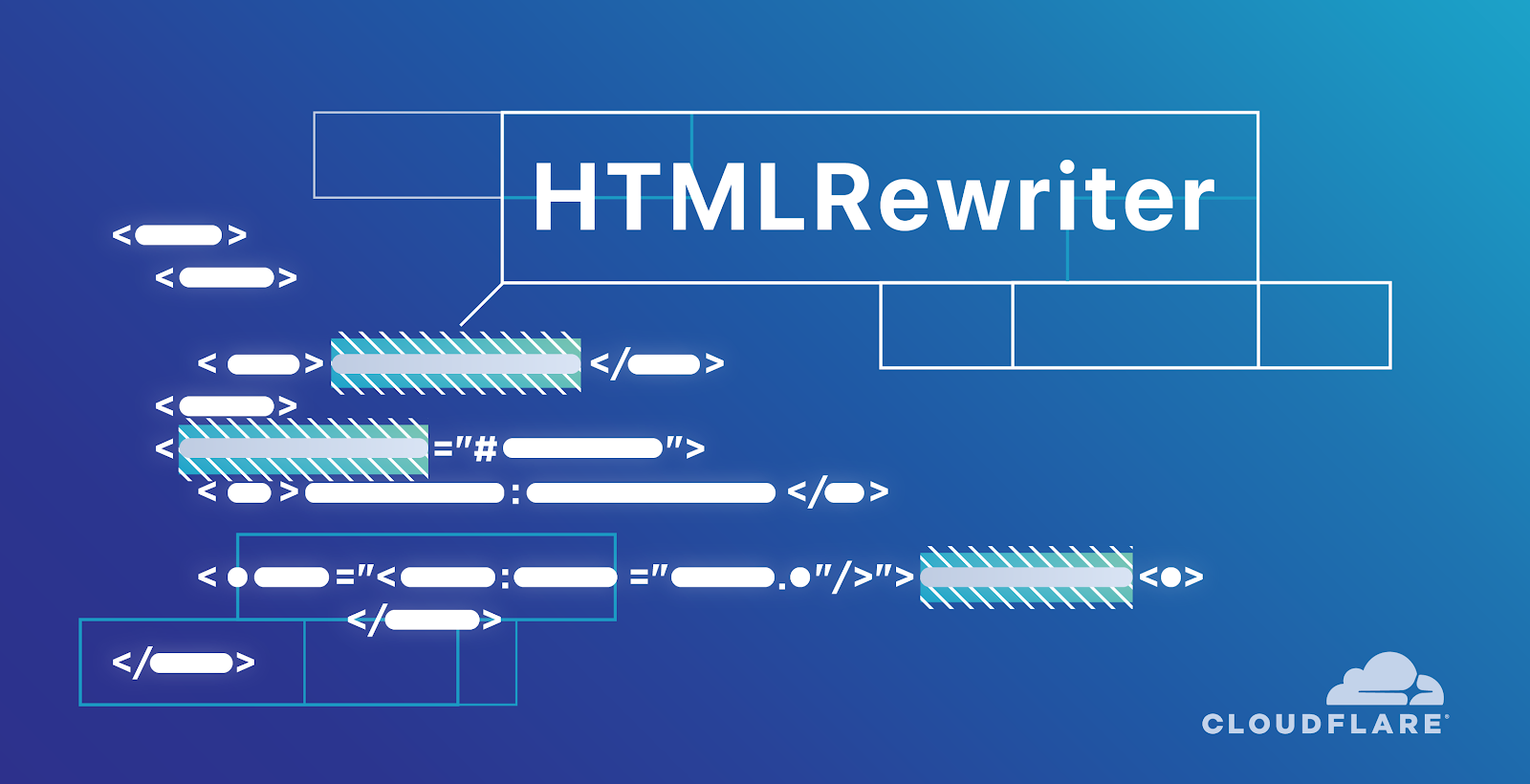
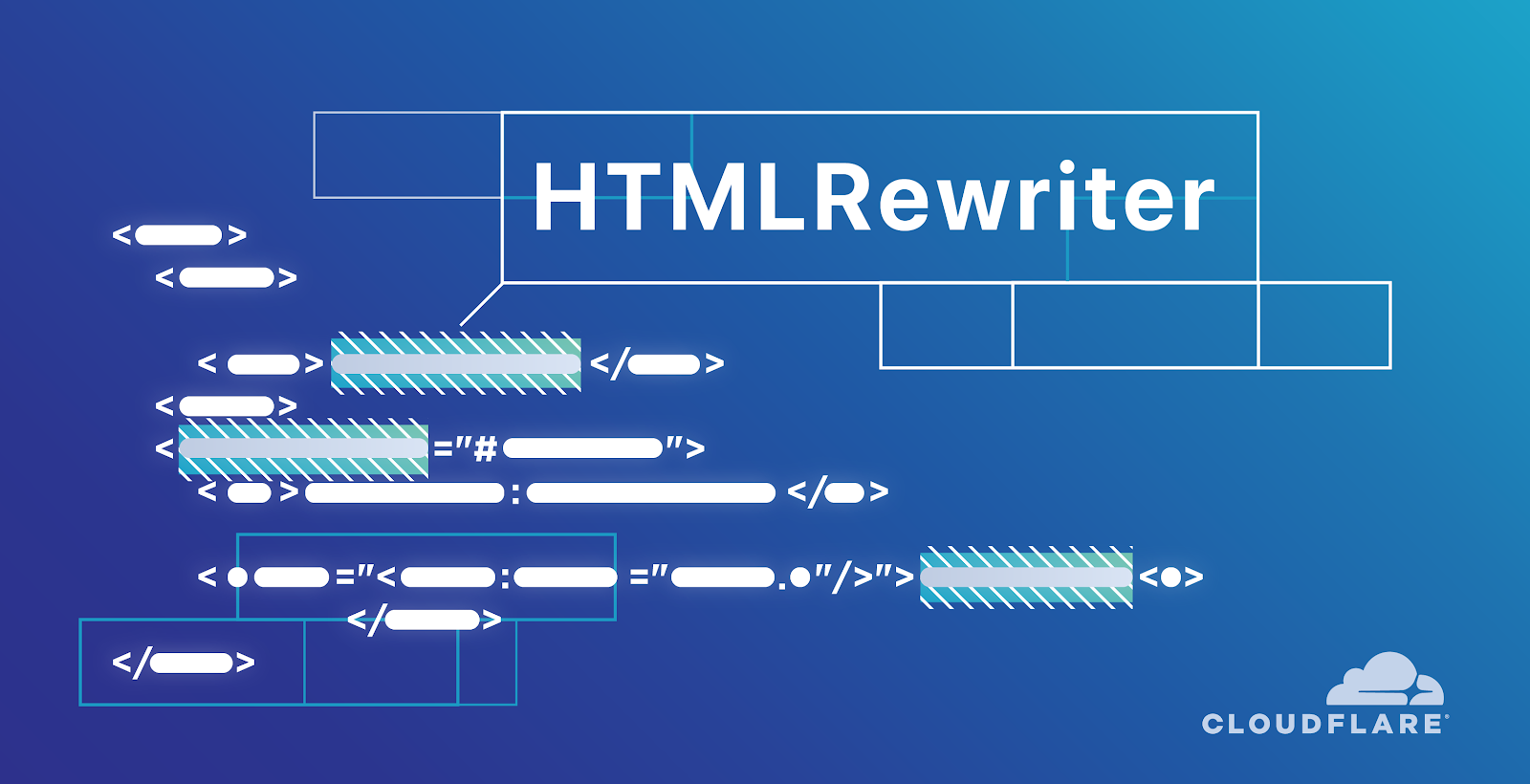
Last year, we launched HTMLRewriter for Cloudflare Workers, which enables developers to make streaming changes to HTML on the edge. Unlike a traditional DOM parser that loads the entire HTML document into memory, we developed a streaming parser written in Rust. Today, we’re announcing support for asynchronous handlers in HTMLRewriter. Now you can perform asynchronous tasks based on the content of the HTML document: from prefetching fonts and image assets to fetching user-specific content from a CMS.
How can I use HTMLRewriter?
We designed HTMLRewriter to have a jQuery-like experience. First, you define a handler, then you assign it to a CSS selector; Workers does the rest for you. You can look at our new and improved documentation to see our supported list of selectors, which now include nth-child selectors. The example below changes the alternative text for every second image in a document.
async function editHtml(request) {
return new HTMLRewriter()
.on("img:nth-child(2)", new ElementHandler())
.transform(await fetch(request))
}
class ElementHandler {
element(e) {
e.setAttribute("alt", "A very interesting image")
}
}
Since these changes are applied using streams, we maintain a low TTFB (time to first byte) and users never know the HTML was transformed. If you’re interested in how we’re Continue reading
How Argo Tunnel engineering uses Argo Tunnel
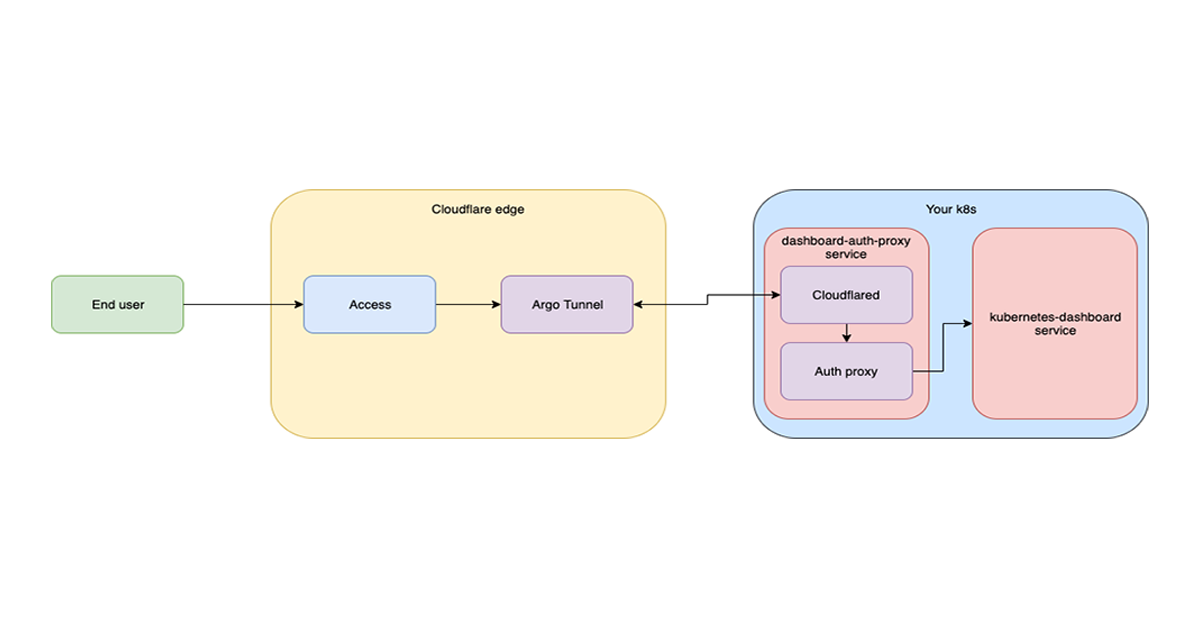
Whether you are managing a fleet of machines or sharing a private site from your localhost, Argo Tunnel is here to help. On the Argo Tunnel team we help make origins accessible from the Internet in a secure and seamless manner. We also care deeply about productivity and developer experience for the team, so naturally we want to make sure we have a development environment that is reliable, easy to set up and fast to iterate on.
A brief history of our development environment (dev-stack)
Docker compose
When our development team was still small, we used a docker-compose file to orchestrate the services needed to develop Argo Tunnel. There was no native support for hot reload, so every time an engineer made a change, they had to restart their dev-stack.
We could hack around it to hot reload with docker-compose, but when that failed, we had to waste time debugging the internals of Docker. As the team grew, we realized we needed to invest in improving our dev stack.
At the same time Cloudflare was in the process of migrating from Marathon to kubernetes (k8s). We set out to find a tool that could detect changes in source code and Continue reading
Cloudflare and Human Rights: Joining the Global Network Initiative (GNI)

Consistent with our mission to help build a better Internet, Cloudflare has long recognized the importance of conducting our business in a way that respects the rights of Internet users around the world. We provide free services to important voices online - from human rights activists to independent journalists to the entities that help maintain our democracies - who would otherwise be vulnerable to cyberattack. We work hard to develop internal mechanisms and build products that empower user privacy. And we believe that being transparent about the types of requests we receive from government entities and how we respond is critical to maintaining customer trust.
As Cloudflare continues to expand our global network, we think there is more we can do to formalize our commitment to help respect human rights online. To that end, we are excited to announce that we have joined the Global Network Initiative (GNI), one of the world's leading human rights organizations in the information and communications Technology (ICT) sector, as observers.
Business + Human Rights
Understanding Cloudflare’s new partnership with GNI requires some additional background on how human rights concepts apply to businesses.
In 1945, following the end of World War II, 850 delegates Continue reading
Announcing wrangler dev — the Edge on localhost
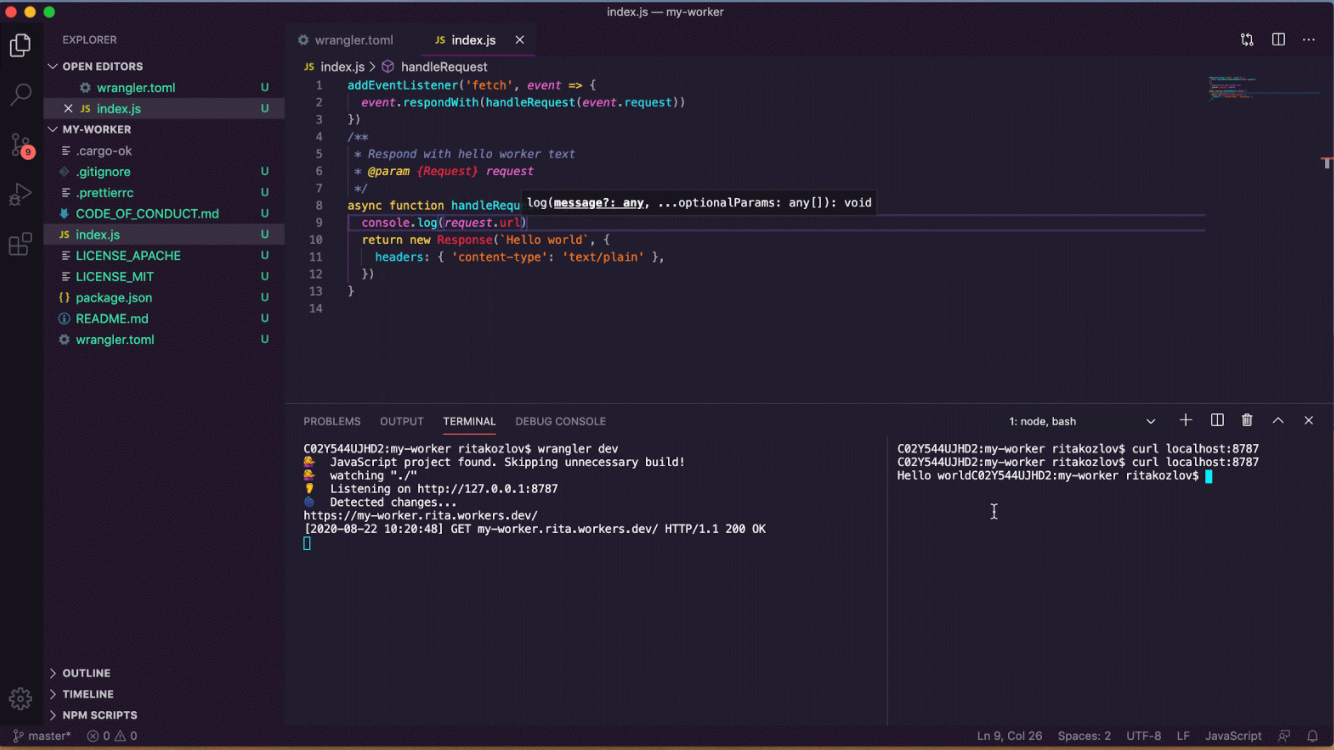
Cloudflare Workers — our serverless platform — allows developers around the world to run their applications from our network of 200 datacenters, as close as possible to their users.
A few weeks ago we announced a release candidate for wrangler dev — today, we're excited to take wrangler dev, the world’s first edge-based development environment, to GA with the release of wrangler 1.11.
Think locally, develop globally
It was once assumed that to successfully run an application on the web, one had to go and acquire a server, set it up (in a data center that hopefully you had access to), and then maintain it on an ongoing basis. Luckily for most of us, that assumption was challenged with the emergence of the cloud. The cloud was always assumed to be centralized — large data centers in a single region (“us-east-1”), reserved for compute. The edge? That was for caching static content.
Again, assumptions are being challenged.
Cloudflare Workers is about moving compute from a centralized location to the edge. And it makes sense: if users are distributed all over the globe, why should all of them be routed to us-east-1, on the opposite side of the world, Continue reading
Improving the Wrangler Startup Experience

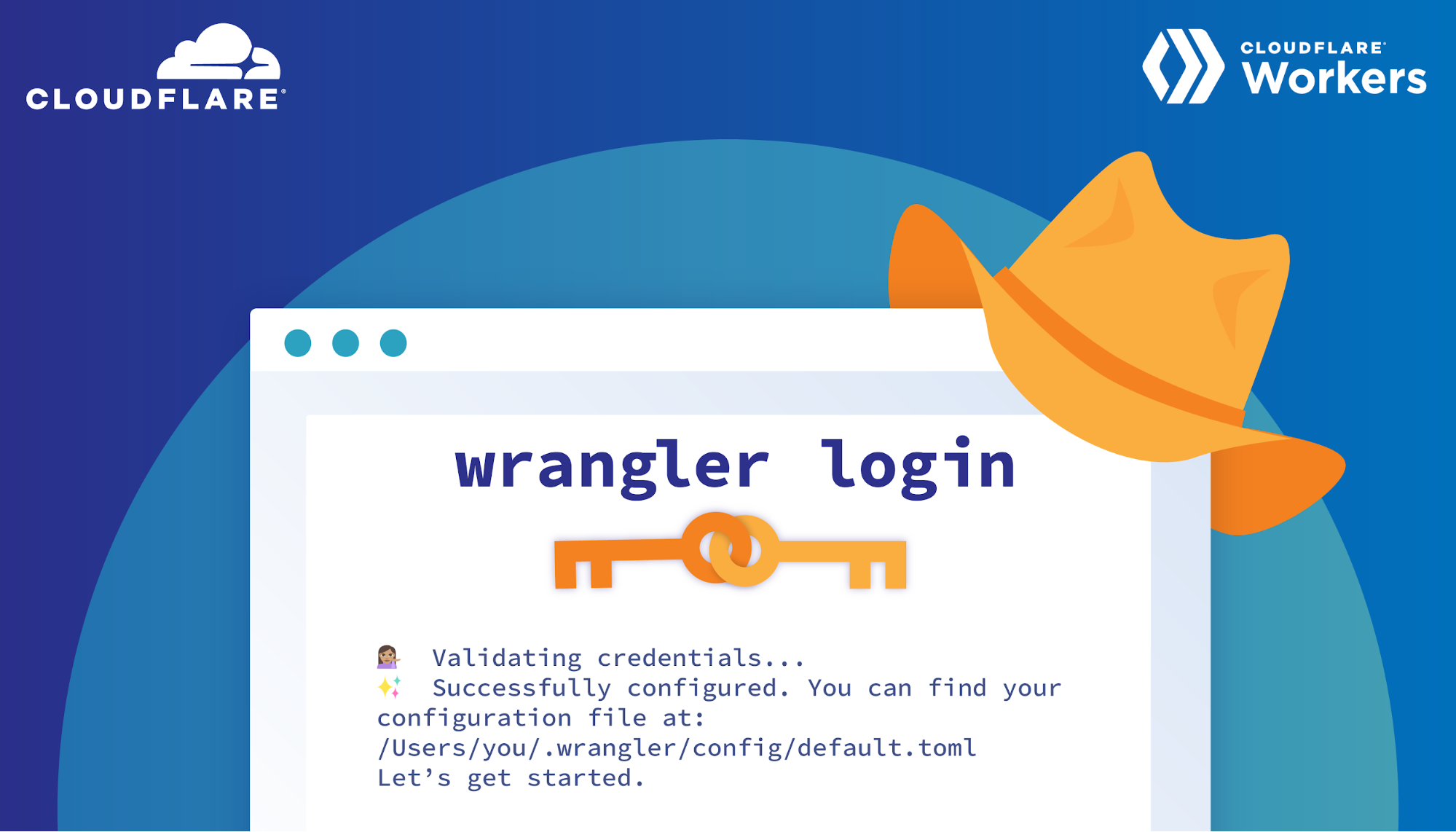
Today I’m excited to announce wrangler login, an easy way to get started with Wrangler! This summer for my internship on the Workers Developer Productivity team I was tasked with helping improve the Wrangler user experience. For those who don’t know, Workers is Cloudflare’s serverless platform which allows users to deploy their software directly to Cloudflare’s edge network.
This means you can write any behaviour on requests heading to your site or even run fully fledged applications directly on the edge. Wrangler is the open-source CLI tool used to manage your Workers and has a big focus on enabling a smooth developer experience.
When I first heard I was working on Wrangler, I was excited that I would be working on such a cool product but also a little nervous. This was the first time I would be writing Rust in a professional environment, the first time making meaningful open-source contributions, and on top of that the first time doing all of this remotely. But thanks to lots of guidance and support from my mentor and team, I was able to help make the Wrangler and Workers developer experience just a little bit better.
The Problem
The main improvement Continue reading
Delivering HTTP/2 upload speed improvements
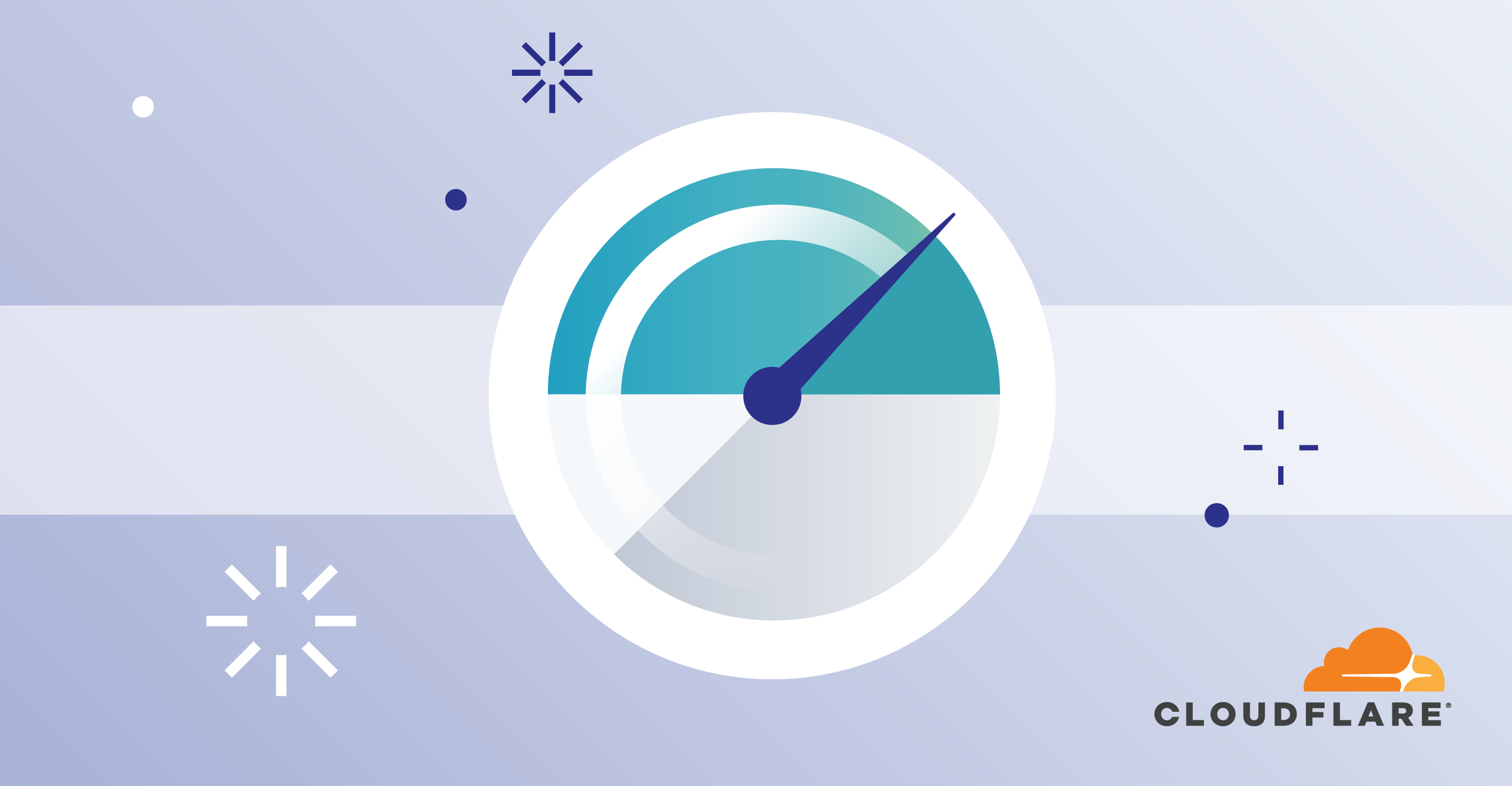
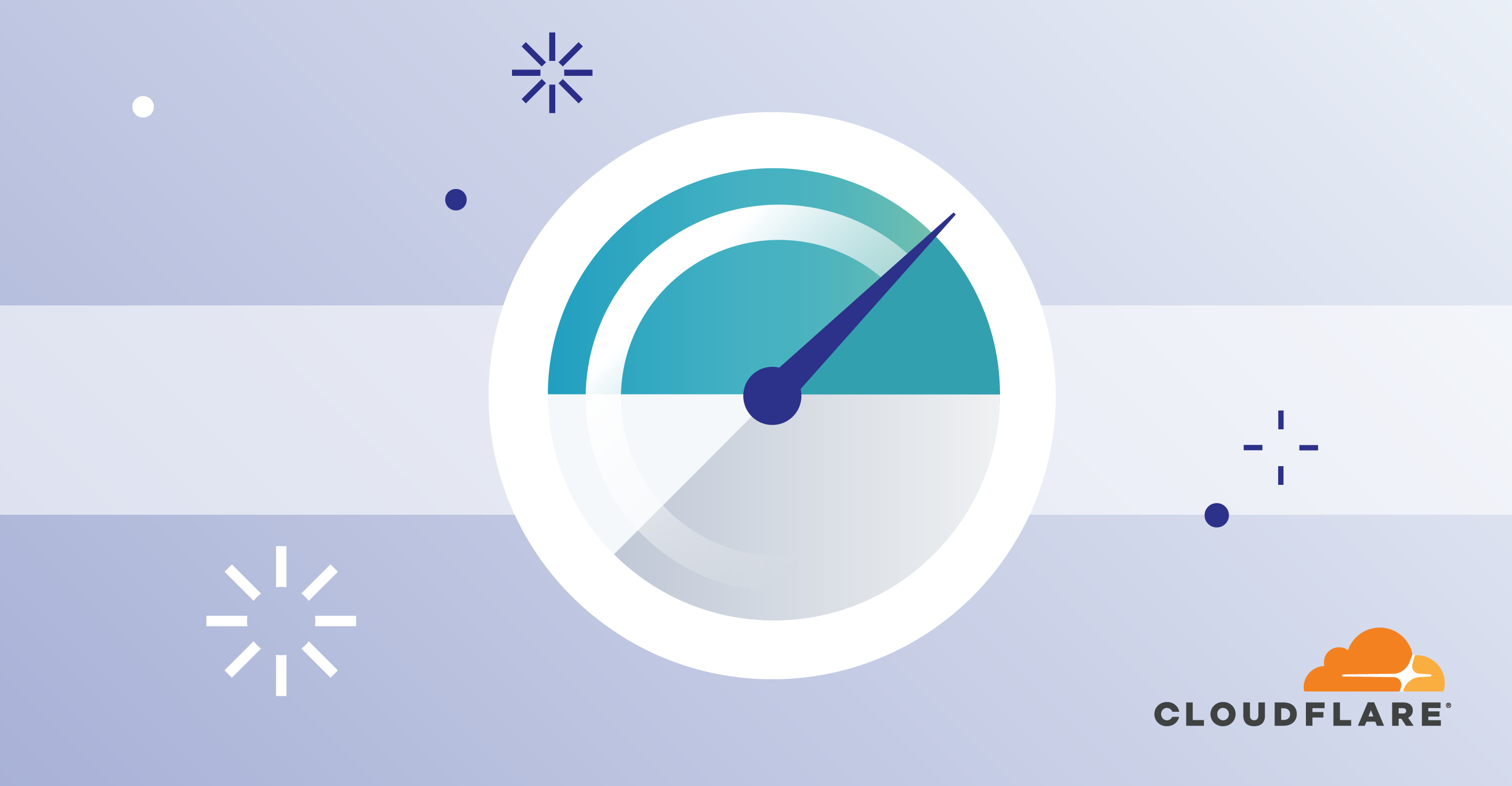
Cloudflare recently shipped improved upload speeds across our network for clients using HTTP/2. This post describes our journey from troubleshooting an issue to fixing it and delivering faster upload speeds to the global Internet.
We launched speed.cloudflare.com in May 2020 to give our users insight into how well their networks perform. The test provides download, upload and latency tests. Soon after release, we received reports from a small number of users that sometimes upload speeds were underreported. Our investigation determined that it seemed to happen with end users that had high upload bandwidth available (several hundreds Mbps class cable modem or fiber service). Our speed tests are performed via browser JavaScript, and most browsers use HTTP/2 by default. We found that HTTP/2 upload speeds were sometimes much slower than HTTP/1.1 (assuming all TLS) when the user had high available upload bandwidth.
Upload speed is more important than ever, especially for people using home broadband connections. As many people have been forced to work from home they’re using their broadband connections differently than before. Prior to the pandemic broadband traffic was very asymmetric (you downloaded way more than you uploaded… think listening to music, or streaming a movie), Continue reading
How Cloudflare uses Cloudflare Spectrum: A look into an intern’s project at Cloudflare
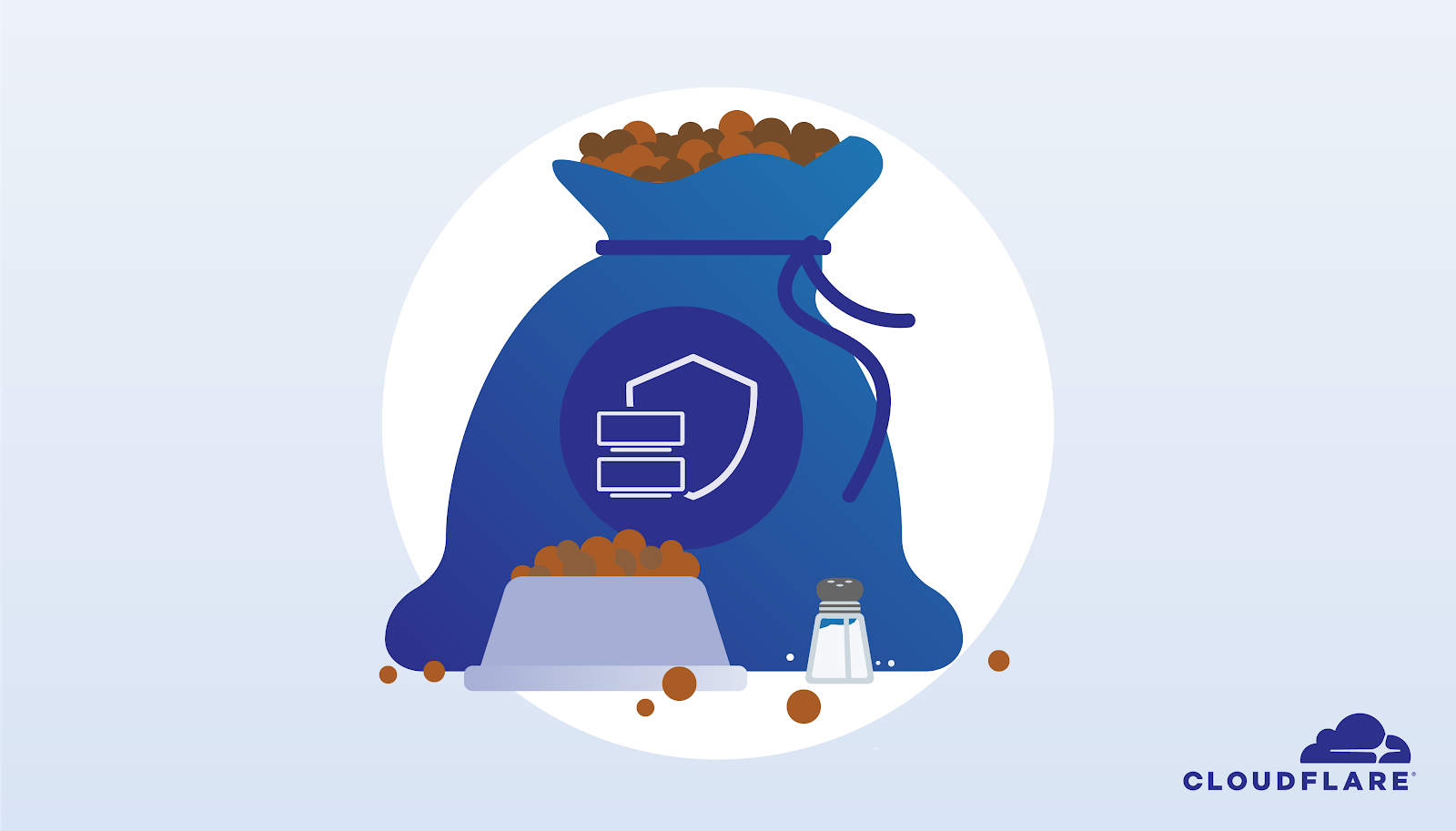
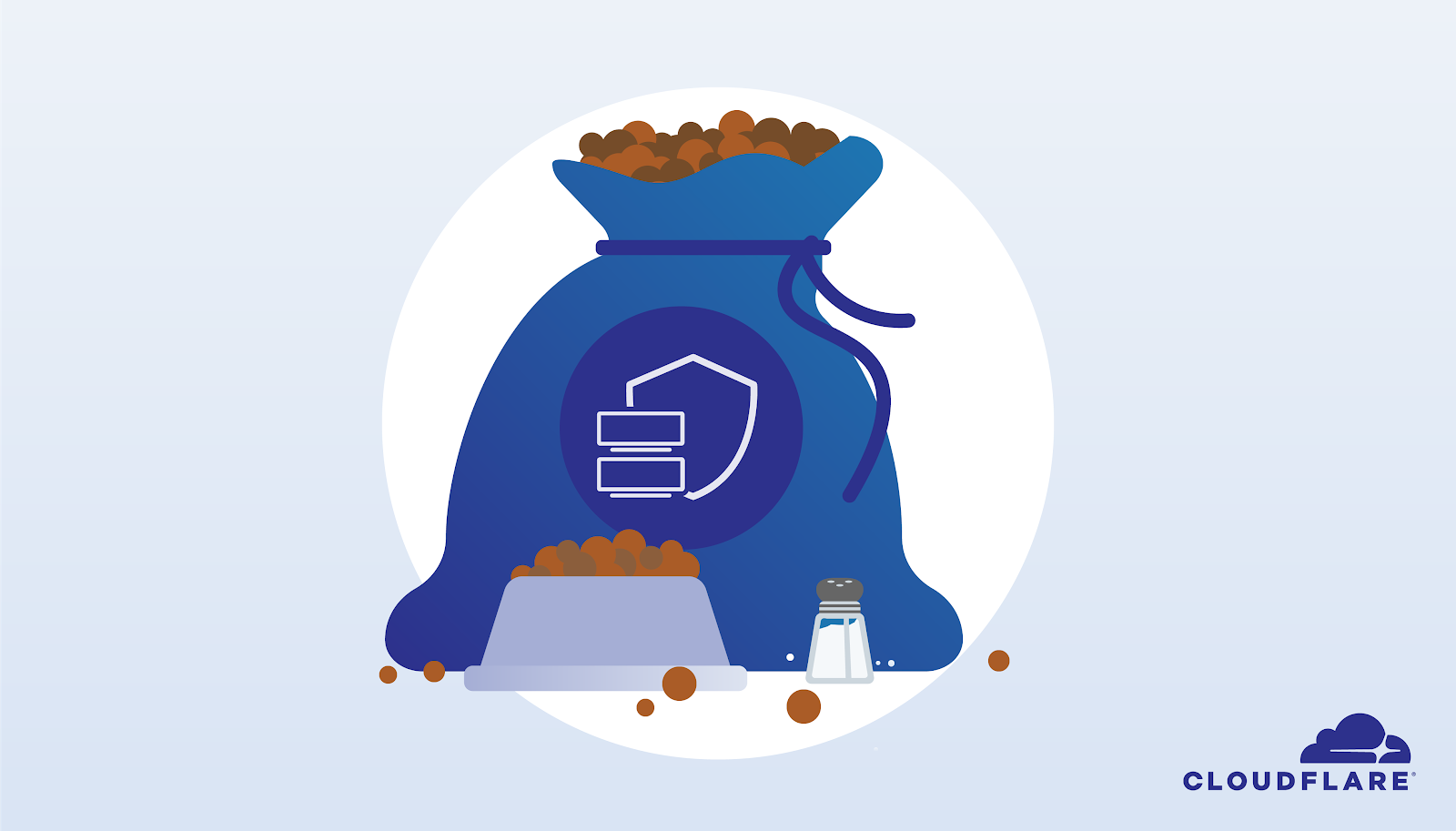
Cloudflare extensively uses its own products internally in a process known as dogfooding. As part of my onboarding as an intern on the Spectrum (a layer 4 reverse proxy) team, I learned that many internal services dogfood Spectrum, as they are exposed to the Internet and benefit from layer 4 DDoS protection. One of my first tasks was to update the configuration for an internal service that was using Spectrum. The configuration was managed in Salt (used for configuration management at Cloudflare), which was not particularly user-friendly, and required an engineer on the Spectrum team to handle updating it manually.
This process took about a week. That should instantly raise some questions, as a typical Spectrum customer can create a new Spectrum app in under a minute through Cloudflare Dashboard. So why couldn’t I?
This question formed the basis of my intern project for the summer.
The Process
Cloudflare uses various IP ranges for its products. Some customers also authorize Cloudflare to announce their IP prefixes on their behalf (this is known as BYOIP). Collectively, we can refer to these IPs as managed addresses. To prevent Bad Stuff (defined later) from happening, we prohibit managed addresses from Continue reading
Introducing Deploy Buttons
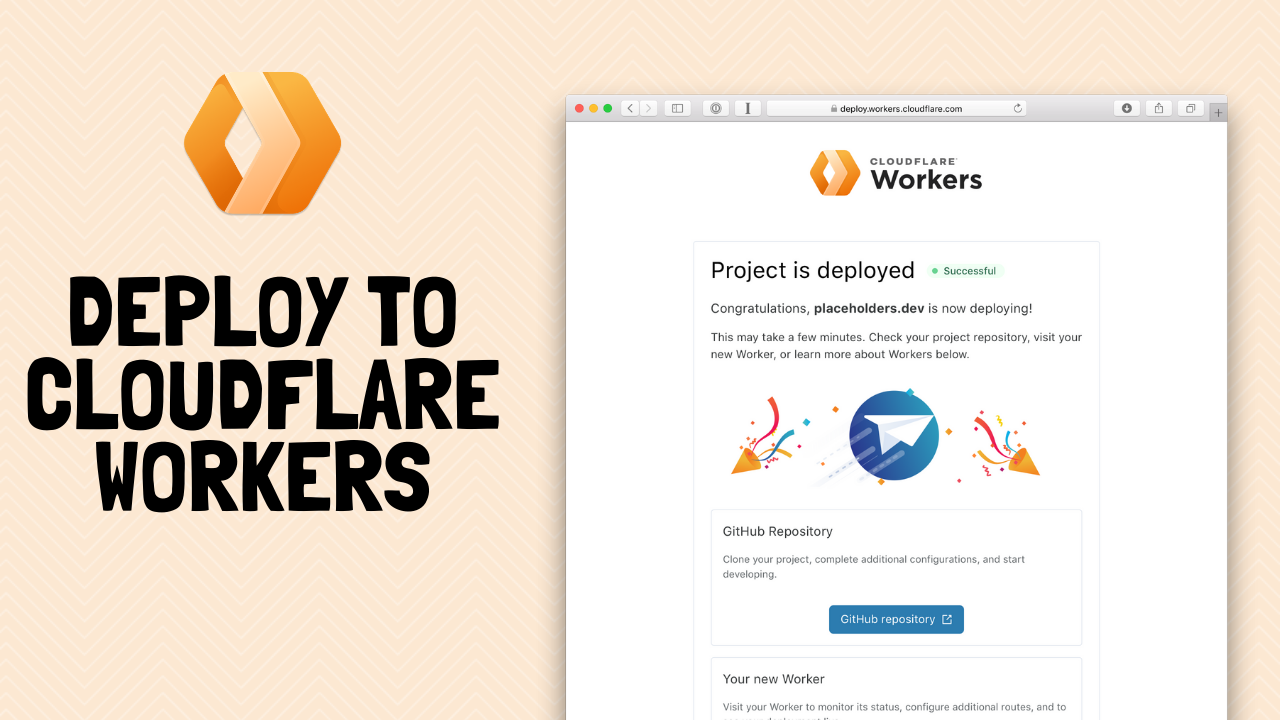
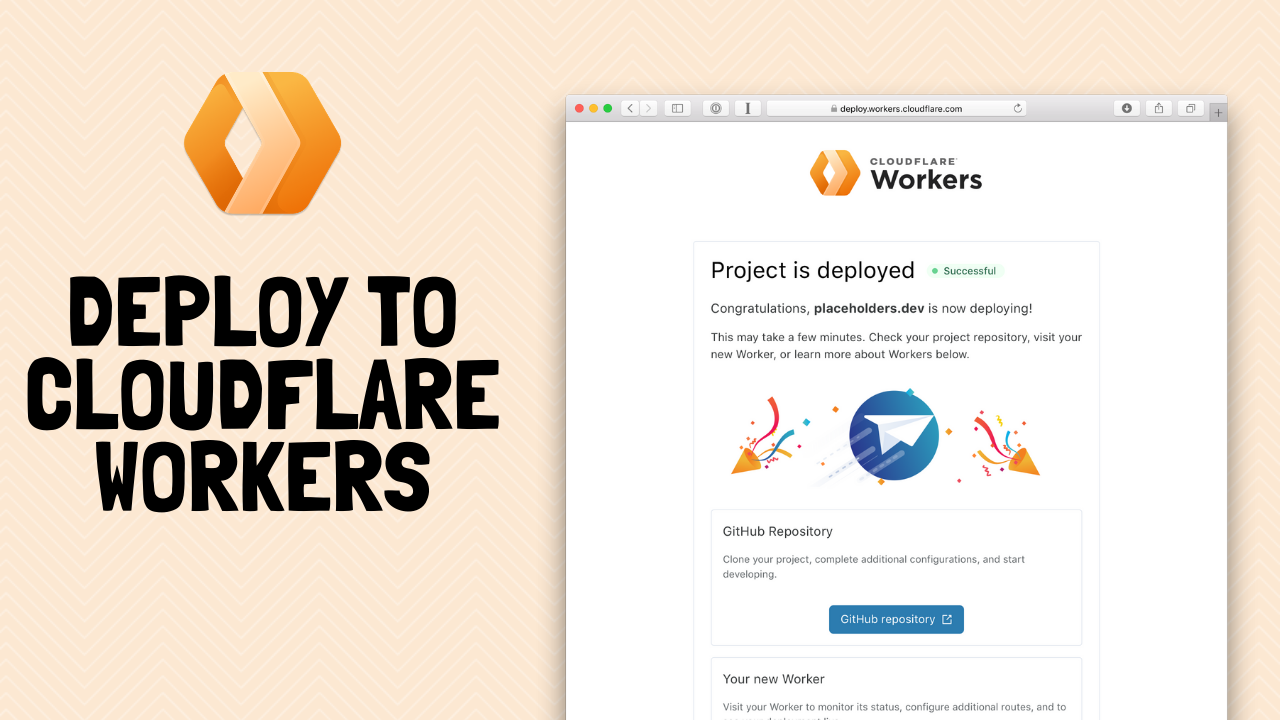
When I first try out new development platforms, the first thing I do is get an OSS (Open Source Software) project I find on Github up and running. I used to start by following tutorials or digging through documentation. It’s a little bit counterintuitive. Let me share with you why. One reason is that Hello, World! examples rarely show the real “magic” of the platform. I want to feel excited and get a sense of how other people are creatively using the platform.
For example, I love it when I can build and deploy an OSS Pokedex app in a few minutes on Flutter to see if the platform actually lives up to the hype. It’s so much easier to do this than to spend a few hours following tutorials and documentation to get through the initial learning curve. You can think of it as shortening the time to first dopamine.
Another reason is that it makes learning the new platform much faster. Building off of an experienced developer’s work shows me which classes and functions are most useful to learn. There’s more nuance to building out full applications than is usually explained in the documentation. I can see how Continue reading
Require hard key auth with Cloudflare Access
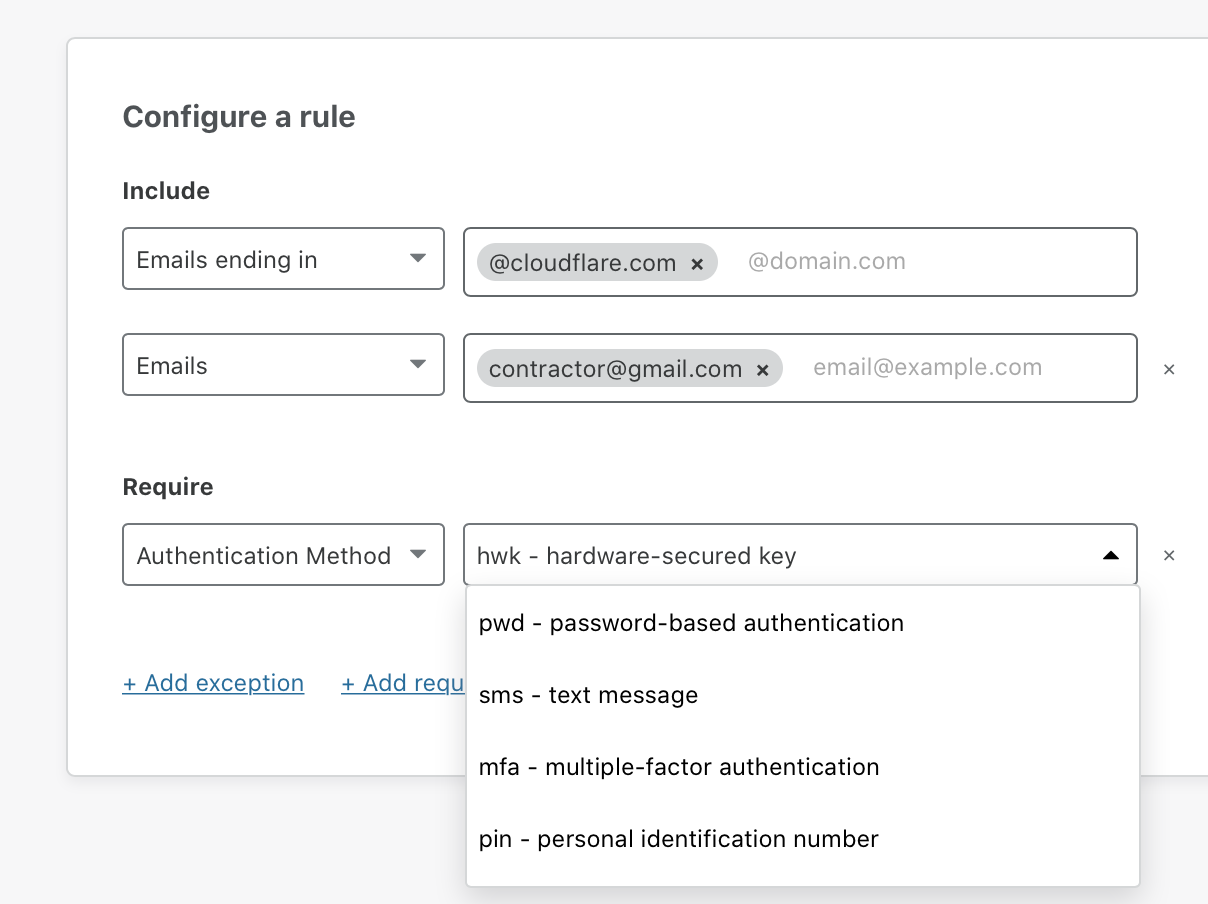
Last month, attackers compromised a Twitter team member’s access to an internal administrative panel in order to take over high-profile accounts. Full details of the breach are still pending, but Twitter has shared that the attackers stole credentials through a coordinated spear phishing attack.
The attackers convinced a team member to share login permissions, giving the attackers the ability to access the Twitter control plane. Once authenticated, they sent password reset flows to email accounts they controlled in order to hijack the Twitter accounts.
Administrative panels like Twitter’s are a rich target for phishing attacks because they give attackers a backdoor to privileged systems. Customer-facing teams at SaaS companies rely on these administrative panels to update end-user data and troubleshoot user account issues. If an attacker can compromise a single team member’s account they can potentially impact thousands of end users.
We have our own administrative panel at Cloudflare and we’ve deployed a number of safeguards over the last several years to keep it secure from phishing attacks. However, we had no way to enforce the security feature we think would most insulate us from phishing attacks: physical hard keys.
With hard keys, users can only login when they use Continue reading
Orange Clouding with Secondary DNS
What is secondary DNS?
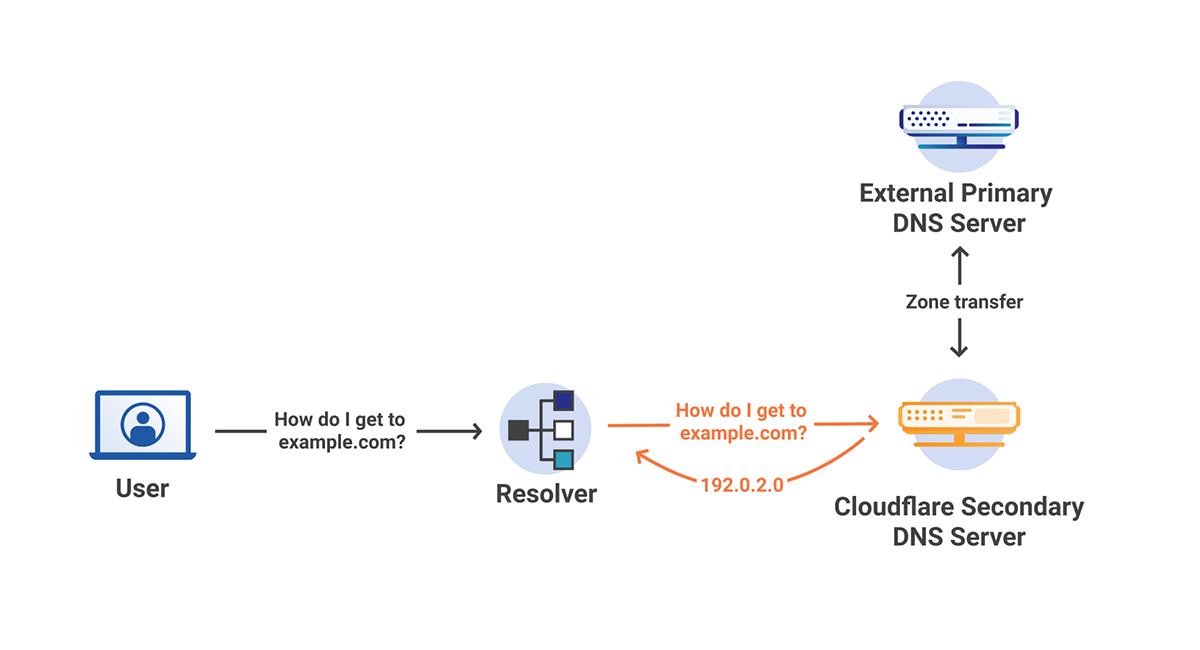
In a traditional sense, secondary DNS servers act as a backup to the primary authoritative DNS server. When a change is made to the records on the primary server, a zone transfer occurs, synchronizing the secondary DNS servers with the primary server. The secondary servers can then serve the records as if they were the primary server, however changes can only be made by the primary server, not the secondary servers. This creates redundancy across many different servers that can be distributed as necessary.
There are many common ways to take advantage of Secondary DNS, some of which are:
- Secondary DNS as passive backup - The secondary DNS server sits idle until the primary server goes down, at which point a failover can occur and the secondary can start serving records.
- Secondary DNS as active backup - The secondary DNS server works alongside the primary server to serve records.
- Secondary DNS with a hidden primary - The nameserver records at the registrar point towards the secondary servers only, essentially treating them as the primary nameservers.
What is secondary DNS Override?
Secondary DNS Override builds on the Secondary DNS with a hidden primary model by allowing our Continue reading
New and improved Workers Docs
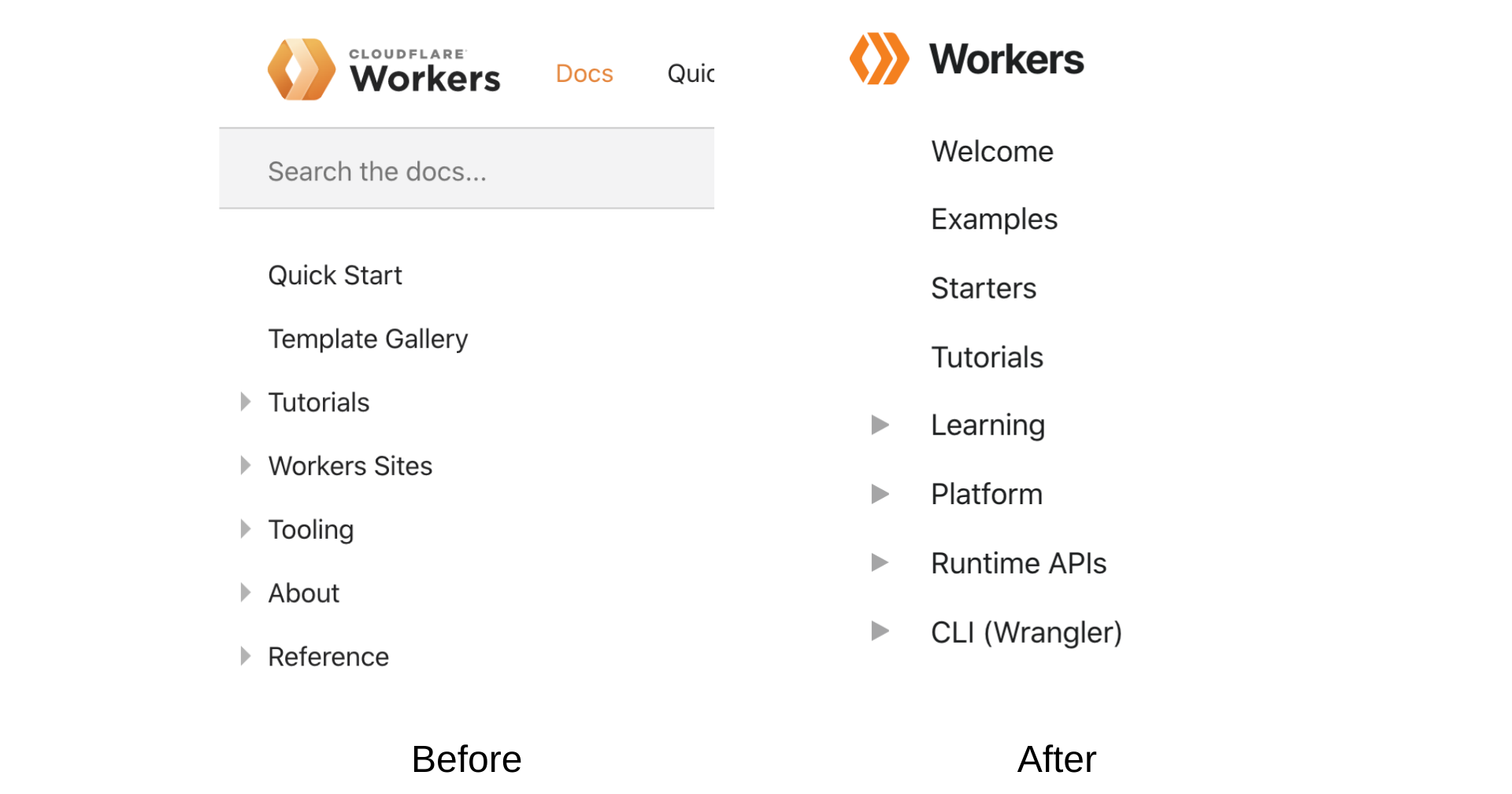
I’m happy to announce several updates to the Workers Docs that will allow you to take full advantage of our Workers platform. We integrated your feedback about the Docs user experience and design. We reorganized and reformatted all of our content. We upgraded the Docs engine to add new UI components. The documentation is now intuitive to navigate and the content is now easy and enjoyable to read.
You can find our new and improved documentation site here and can find the docs engine on our repo.
We hope this creates a better developer experience for you and makes the Docs more approachable to beginners. We plan to use our work and improvements for the Workers Docs to revamp docs for other Cloudflare products too.
Here’s a more detailed breakdown of the Workers Docs update.
Content Organization: We reorganized site content into four categories to make it easier for you to read and find content: Tutorials, How-to guides, Technical reference, and Learning. The new content structure is heavily inspired by Divio’s documentation system.
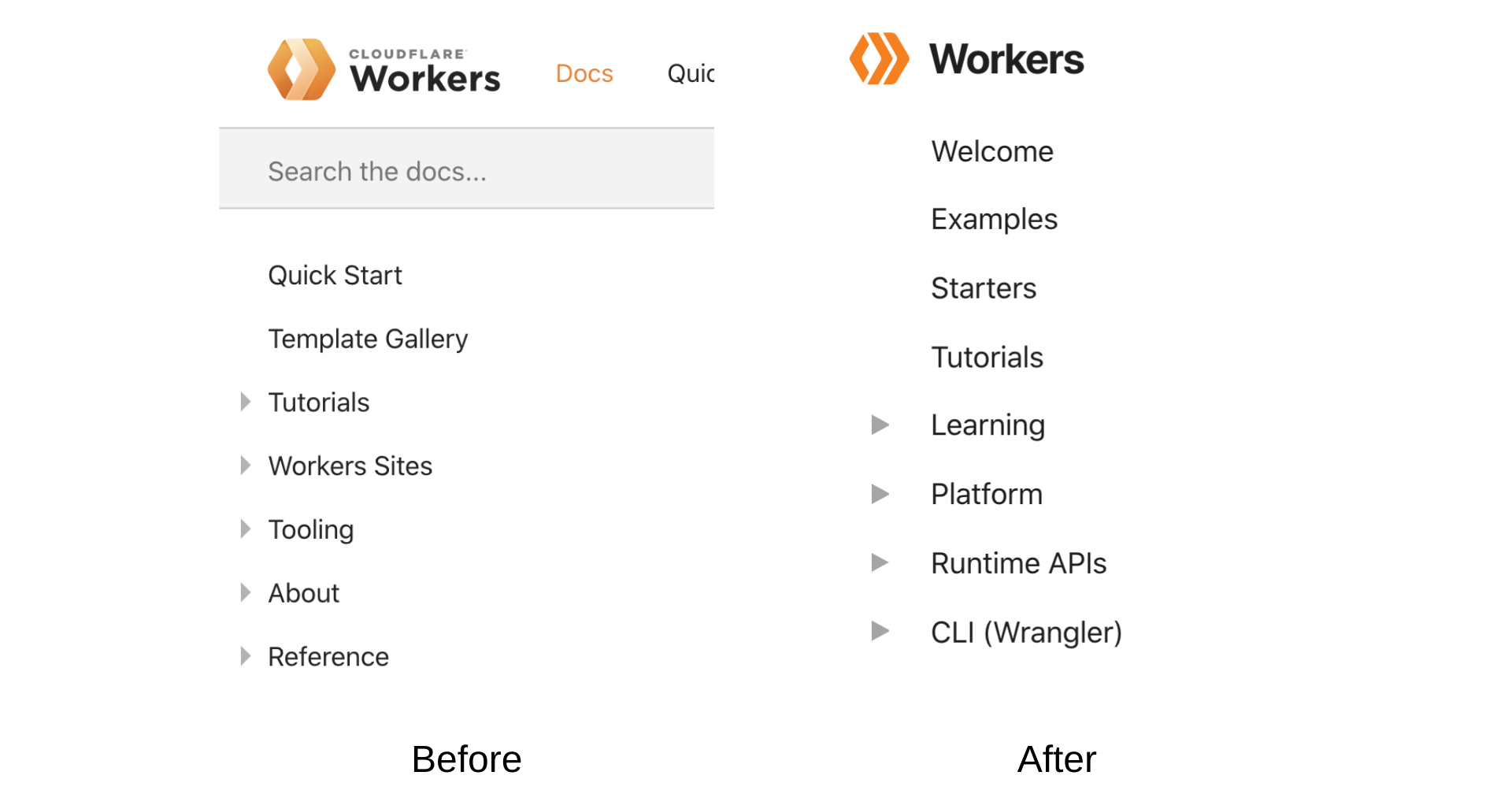
The tutorials section groups together step by step guides for building a specific project on Workers (e.g. teaching a beginner how to cook). The how-to guides Continue reading
Election Cybersecurity: Preparing for the 2020 U.S. Elections.

At Cloudflare, our mission is to help build a better Internet. As we look to the upcoming 2020 U.S. elections, we are reminded that having the Internet be trusted, secure, reliable, and accessible for campaigns and citizens alike is critical to our democracy. We rely on the Internet to share and discover pertinent information such as how to register to vote, find polling locations, or learn more about candidates.
Due to the spread of COVID-19, we are seeing a number of election environments shift online, to varying degrees, with political parties conducting virtual fundraisers, campaigns moving town halls to online platforms and election officials using online forms to facilitate voting by mail. As the 2020 U.S. elections approach, we want to ensure that players in the election space have the tools they need to stay online to promote trust and confidence in the democratic system.
We’re keeping an eye on how this shift to online activities affect cyberattacks. From April to June 2020, for example, we saw a trend of increasing DDoS attacks, with double the amount of L3/4 attacks observed over our network compared to the first three months of 2020. In the election space, we are Continue reading